Now that the Sonic and Cruze have launched, by all accounts, successfully, Chevy is eager finish up the upper two models in its family car lineup. This 2013 Malibu Eco marks the three quarter mark on this refresh project while the Impala awaits its turn for 2014.
The outgoing Malibu was on the large end of the mid-size scale, nearly approaching big brother Impala in overall size. And, while not the most feature laden of family cars, it offered a good combination of space, performance, efficiency, and value. In fact, even when viewed next to more modern designs like the Kia Optima and Toyota Camry, the 2012 Malibu was still an attractive and handsome car, especially in upper trims. That generation of Malibu had fairly good reports for build quality and reliability as well.
Chevy could likely have gotten away with a minor styling refresh with some power train updates and kept that model on sale for another two years. Instead, Chevy decided to push the new Malibu out sooner in spite of not all of the engines being ready at launch. So instead of a full Malibu lineup, the car was launched in only the Eco trim which comes only with a mild hybrid setup GM called eAssist.
I sampled the eAssist set up in the 2012 Buick Lacrosse back in January where I achieved an astounding 36mpg highway and 27mpg city. I was impressed with the performance of the eAssist because it gave the 4-cylinder gasoline engine more of a smooth V6 feel while rolling around town yet was still able to get to those fuel efficiency numbers without employing one of the more expensive full-hybrid configurations in a car that is not at all light weight.
So the 2013 Malibu has two main tasks to convince me of: First prove that it is better than the outgoing Malibu and second perform at least equal or better than the bigger and heavier Buick Lacrosse eAssist. A few weeks ago, you got William Maley’s review on the 2013 Chevrolet Malibu Eco and now it is my turn. Is the new Malibu up to the two tasks I have set out for it?
Next up: How is the Malibu inside?
As GM’s value brand, it is Chevy’s job to offer good value for the money. Clocking in at an eye popping $29,380 as tested, this Malibu has a number of nice features, but a notably absent one at this price being a full navigation system instead of just OnStar turn-by-turn. In the prior model, the only navigation option was OnStar, but the rest of the car upped the value quotient with a lot of car for your dollar with good passenger space and plenty of trunk room.
With the new Impala coming, Chevy had to kick the Malibu down a notch in size and shaved 4.5 inches out of the wheelbase while trimming exterior length by just 2/10ths of an inch. I know we usually start our tour with the driver’s position, but this 4.5 inch drop has the largest impact on rear seat passengers.
Chevy claims it was able to keep rear legroom about the same by the numbers, but I wasn't able to find it. Rear leg room is on the tight side and even though I’m only 5’10”, my knees were almost in the back of the front seat. In fact, knee room feels roughly on par with the Malibu’s little brother Cruze. The Cruze get there by having cutouts in the rear of the front seat. It seems to me this same trick could have been employed to get a little more room for the Malibu, but no such luck. Even the Jetta, a car that should not even be playing in this size class, has a good bit more leg room than the Malibu.
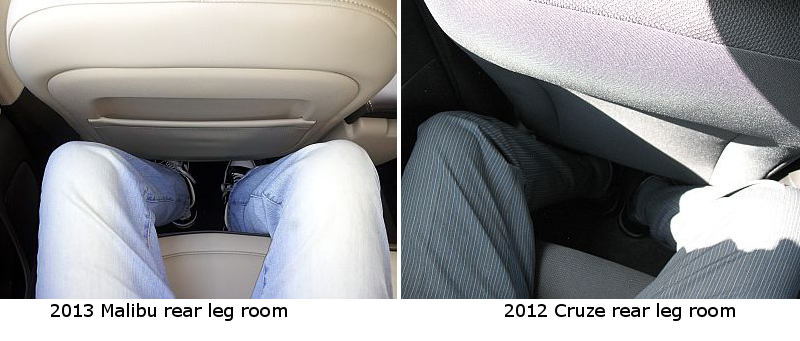
Headroom in back is merely acceptable, but don’t be much taller than I am. Those wishing for a rear center armrest that the previous model lacked finally get their wish fulfilled. The rear seats themselves are firmly supportive and comfortable.
Moving up to the pilot’s position, we are greeted with a new take on Chevy’s dual cowl dashboard. The design is now split horizontally with black plastic ribbing inside the split and a thin chrome strip running through the center. No one’s pictures (especially mine) do the design justice, but it does look very attractive in person especially when the night time ambient lighting kicks on. The plood on the steering wheel, doors, and center console looks especially fake with the dark veins of grain looking printed on almost to the point of being pixilated.
The large oval center stack dominates and the camaro-esque instrument panel gives a nod to the Malibu’s sportier cousin. Controls on the center stack are laid out logically and have a high quality feel to them. An attractive addition is the active backlight behind the controls that gives a swooshing lighting effect when you make adjustments on certain dials.
Chevy’s MyLink system is here and it is simple enough to use for even the most technically inept. I did find the response from the touch screen to be rather laggy, but otherwise I experienced no bugs. There is a compartment under the MyLink screen which would be useful for storing your MP3 player or smart phone if Chevy had included a USB port inside. Without that, the smart phone was relegated to the center console. The only thing I found the compartment useful for was storing my toll transponder.
The HVAC system is more than up to the task of cooling the cabin rapidly. There are two modes for the system : Eco and Comfort. Eco will allow the eAssist system to stop the gas engine when the car has come to a stop, in effect stopping the cooling ability of the A/C compressor. The Comfort setting will continue to run the engine to keep the cabin cool. Being somewhat eco conscious, I kept the setting in Eco, however the car seemed to want to override my selection from time to time and bump back into Comfort. If outside temperatures are over about 85 degrees Fahrenheit you will probably want to keep the car in Comfort as cabin temperature can rise rapidly at a long light.
Interior build quality is not one of the new Malibu’s strong suits. I found numerous assembly defects in my test vehicle. Frankly, given the great strides GM has made on its interiors lately, the number and severity of the defects in this Malibu was shocking. Hitting heavy turbulence, I noticed the instrument pod had a bit of extra shake to it. After poking at that I found the cover just peels back. Even just small amounts of pressure was able to move part of the dash on the passenger side around, and just a one handed small tug pulled the whole piece off. The carpet on the passenger side was not installed correctly, leaving a large gap in the foot well. Interior panel gaps were misaligned all over. I’m not sure how this particular car ever passed Q/C much less end up in the press fleet.
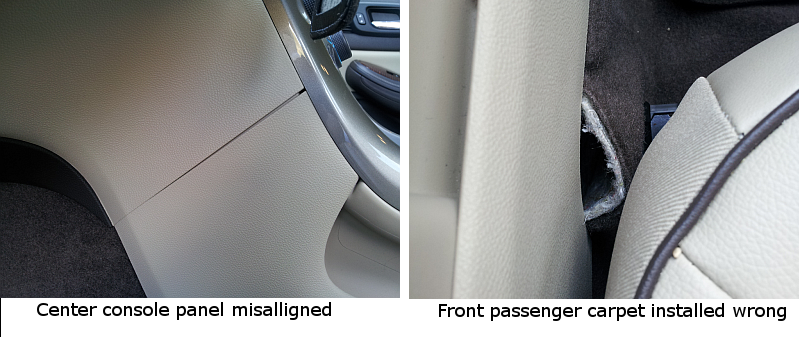
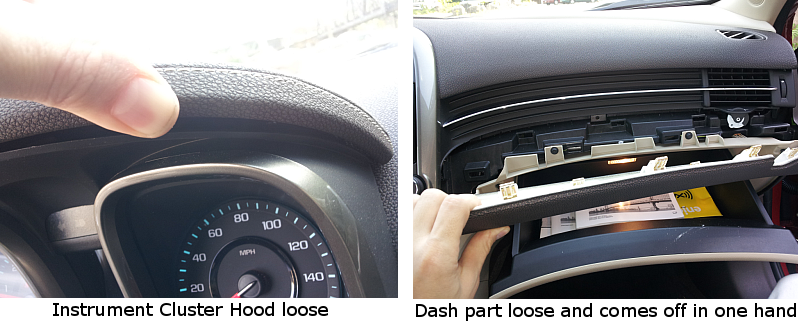
Next up: Can we judge a book by its cover?
With a new model comes new exterior styling as well. Personally, I felt the dearly departed previous generation Malibu to be one of the most handsome vehicles in the segment. If I were in the market, I could have written a check for the LTZ without remorse.
Out front Chevy butched up the face of the Malibu with a lot more creases and folds. Rather than one subtle crease in the hood like the previous model, Chevy upped the ante with no less than 7 folds of the metal making up just the hood. It has to be a very expensive part to produce and on my example it did line up perfectly. In fact, all of the body panels lined up well with tight gaps. Around back, Chevy incorporated more Camaro into the tail lights. Taken as a whole, I like the overall more masculine effect. It’s not better or worse than the previous body, just a different style. If I had any specific complaint about the exterior, it is that the 17” aluminum wheels look too small, but that is likely a compromise for Eco’s sake.
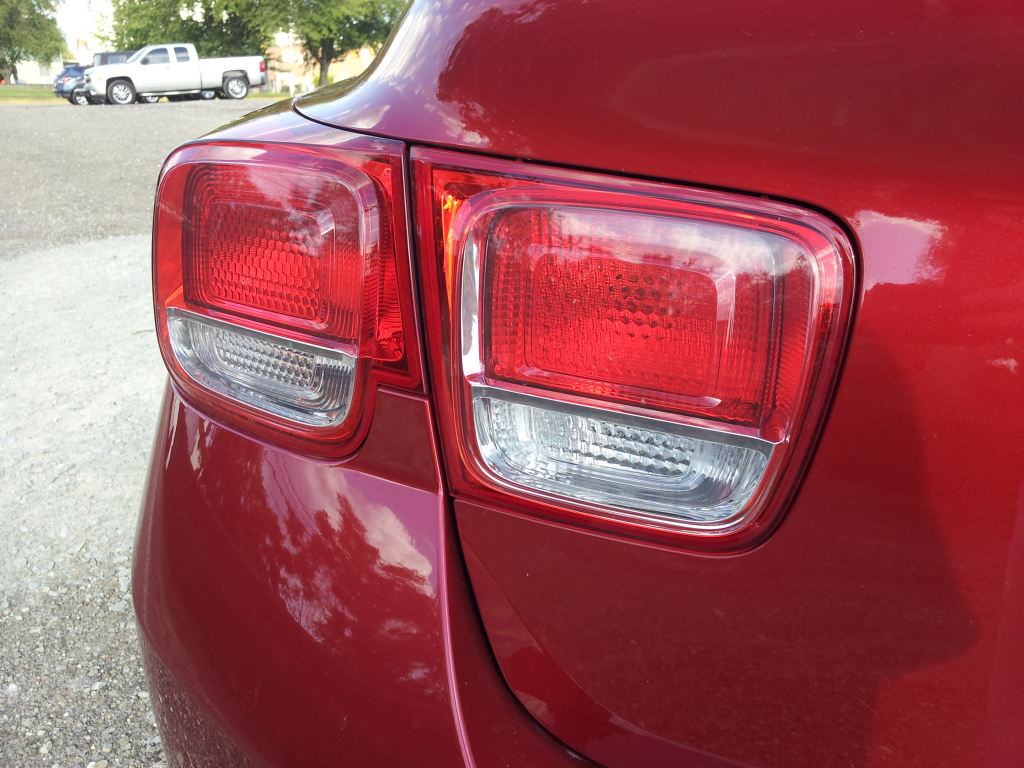
If you’re expecting to need to haul a lot in the trunk, just wait for a non-Eco model. The battery pack takes up so much room back there you end up with one of the smallest trunks in the class and again bested by Cruze and Jetta.
Next up: Yes, but how does the Malibu Eco drive?
In spite of the Camaro cues incorporated into various parts of the Malibu design, it isn't especially sporty out on the road. The suspension is more concerned with providing comfort than strong cornering abilities. Out on the highway, the Malibu is a comfortable long distance cruiser soaking up road imperfections before they infiltrate the cabin.
One of the reasons you can buy a 2013 Malibu today rather than having to waiting till the fall is because GM management at the highest levels decided to push the car out early in spite of not all engines being ready for production. Since the 2.4 liter Ecotec with eAssist was the only engine ready to go at launch time desired by management. This put Chevy in the disadvantage of having its new midsize entry come with an initial base price thousands of dollars above the competition.
Functionally, the eAssist starts and runs like any other engine out there available. During light acceleration conditions, the 15 horsepower electric motor adds some twist to the wheels to help out the gas engine and save some fuel. The additional power mostly comes on at lower speeds, giving the 4-cylinder a more torquey feel that one might expect from a V6. On the highway, the system will give slight boost to crest light waves in the highway while regenerating the battery on the downside of the hill. The transition between assist and regeneration is absolutely seamless and, unless you have one of the power train displays up, you will have no idea what is going on under the hood. When stopping at a light, the eAssist will also stop the gasoline engine unless the HVAC system is set to Comfort as mentioned above or if the engine is not yet at operating temperature. Full throttle acceleration is not what I would call brisk. Swing the tach too far past the 4,000 mark and the engine seems to run out of breath. Don’t expect much help from the electric motor at that point either, its 15 horsepower only goes so far.
While I appreciated the eAssist in the Buick Lacrosse back in January, the lack of Buick’s quiet tuning was quite apparent here with much more engine noise entering the cabin.
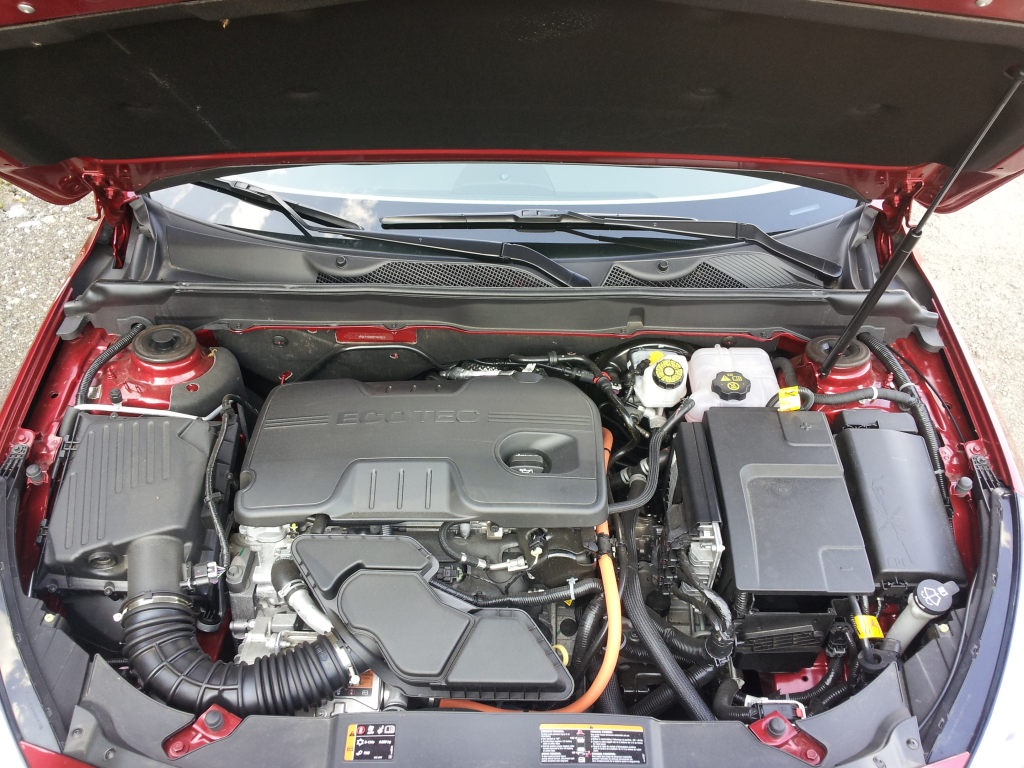
Brake feel has the same lack of feedback that nearly every hybrid I've driven has. There were a couple of times when coming to a stop that I rolled out further than I expected to due to this lack of feel.
Fuel economy for an “Eco” midsize was terrible. As I mentioned earlier, I left the climate control in Eco mode as much as possible and averaged just 23.7 mpg combined for the week. On one longer trip I hyper-miled it and still was only able to manage 28mpg. There are circa 300 horsepower V6es in heavier cars that can do better than that, Chevrolet’s own Camaro V6 being the most obvious example and Chrysler 300 is another. At first I thought the atrocious fuel economy was a problem limited to one car as I had done substantially better in the Buick Lacrosse eAssist review, however William Maley experienced similar terrible fuel economy during his review of the 2013 Malibu Eco a few weeks ago. In the end, it just reinforces the idea that if Chevrolet went through the hassle of fitting batteries into the car, shouldn't it get substantially better fuel economy than those cars without?
Next Up: What it all boils down to...
In the end, the 2013 Malibu Eco failed the two tasks I set out for it. The unacceptable build quality of my example ruined any chance of it being judged better than the prior model. The diminish rear seat room that has the Malibu matching with the Jetta and Cruze, the class smallest trunk space, the real world fuel economy below a larger Buick with the same power train, and higher-than-competition base price tag remove the value proposition. About the only thing this Malibu has going for it at the moment is its looks and a decent entertainment system.
It is abundantly clear that this was a rush job on GM’s part, a rush job that wasn't even necessary with the already competent, though aging, previous generation Malibu out there for sale and doing good for GM’s reputation. Sorry GM, this one wasn't done cooking before you took it out of the oven. Better see what you can do to salvage things.
General Motors provided the Chevrolet Malibu Eco, one tank of fuel, and insurance.
Make: Chevrolet
Model: Malibu
Model Year: 2013
Trim: Eco 2SA
Engine: Transversely mounted 2.4 liter 4-cylinder with eAssist
Transmission: Front Wheel Drive, 6-speed manual
Max horsepower @ RPM: 182 hp @ 6200 rpm
Max torque @RPM: 171 lb-ft of torque @ 4900 rpm
EPA Fuel Economy: 25 City / 37 Highway
Exterior color as tested: Crystal Red Tintcoat
Interior color as tested: Cocoa
Location of Manufacture: Kansas City, Kansas, USA
MSRP as tested: $29,380.00
Drew Dowdell is Managing Editor of CheersandGears.com and can be reached at [email protected] or on twitter as @cheersngears




-3707742431.jpg.06edf8e14f4ccf35c60d4774a543cc11.jpg)



Recommended Comments
Join the conversation
You can post now and register later. If you have an account, sign in now to post with your account.
Note: Your post will require moderator approval before it will be visible.